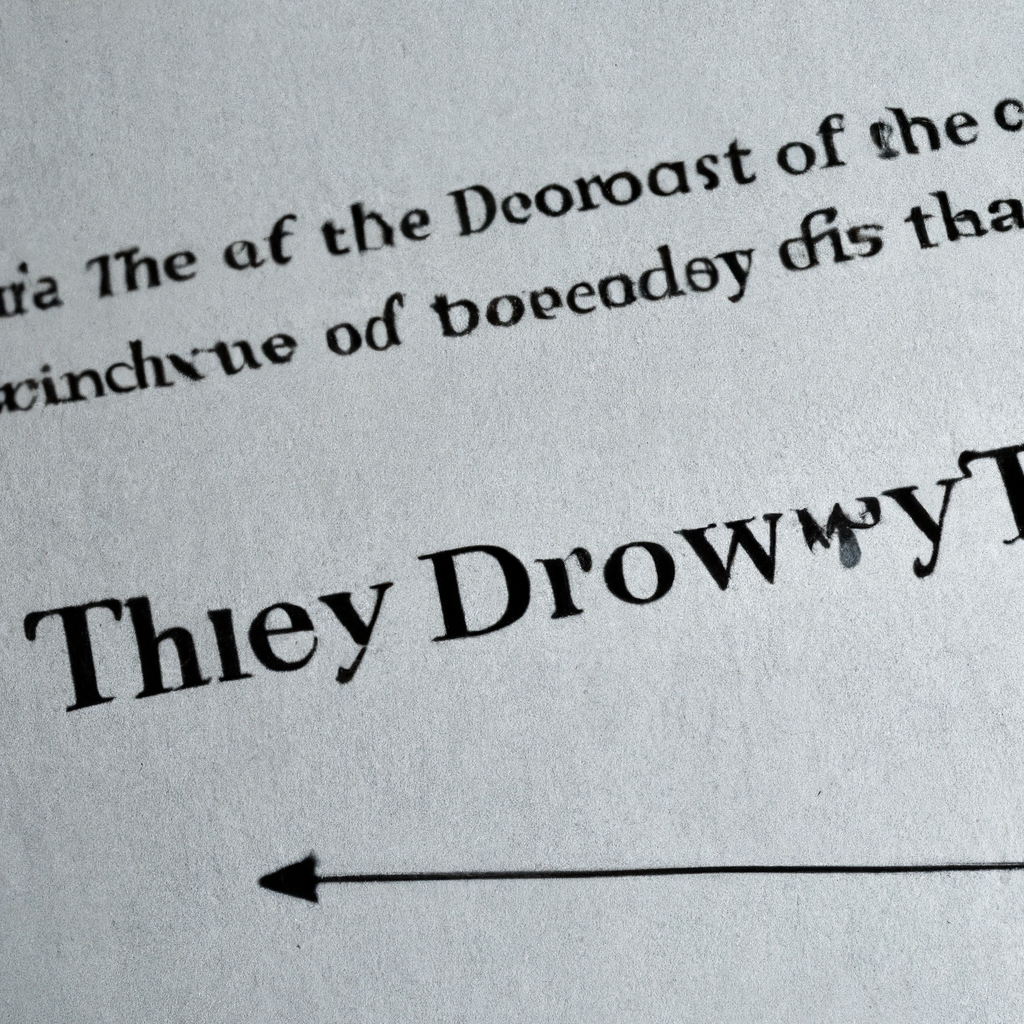
Introduction
The Dow Theory is a widely used approach in market forecasting that aims to understand and predict the movements of the stock market. Developed by Charles H. Dow, the theory is based on the analysis of market trends and patterns. By examining the price movements of major stock market indices, the Dow Theory provides valuable insights into the overall market direction and potential future trends.
Understanding the Dow Theory
The Dow Theory is built on six key principles, which form the foundation for market analysis and forecasting. These principles are:
1. The Market Discounts Everything
According to the Dow Theory, the market reflects all available information and factors that may influence the price of a security. This means that all past, present, and future events are already factored into the stock prices. Therefore, any analysis should focus on interpreting the market’s reaction to these events rather than trying to predict the events themselves.
2. The Market Moves in Trends
The Dow Theory suggests that the market moves in primary trends, which can be categorized as either bullish (upward) or bearish (downward). These trends are further divided into intermediate and minor trends. Analyzing these trends can help investors identify the overall direction of the market and make informed investment decisions.
3. Confirmation of Trends
The Dow Theory emphasizes the importance of confirming trends using multiple indices. For example, if the Dow Jones Industrial Average (DJIA) and the S&P 500 both show consistent upward movements, it strengthens the bullish trend. Conversely, if these indices move in opposite directions, it may indicate a potential reversal or market uncertainty.
4. Volume Confirms the Trend
Volume is a critical component in Dow Theory analysis. It suggests that the volume of trading should increase in the direction of the prevailing trend. Higher trading volume during an upward trend signifies strong buying interest, while higher volume during a downward trend indicates increased selling pressure. Volume acts as a confirmation of the trend and helps traders validate their analysis.
5. Trend Continuation and Reversal
The Dow Theory acknowledges that trends tend to continue until a clear reversal signal is observed. It suggests that investors should assume the trend will persist until there is evidence of a reversal. Reversal signals may include significant price movements, changes in trading volume, or the violation of key support or resistance levels.
6. Averages Must Confirm Each Other
The final principle of the Dow Theory states that the industrial and transportation averages should confirm each other to validate a trend. If both averages are moving in the same direction, it reinforces the reliability of the trend. For instance, if the DJIA is rising while the Dow Jones Transportation Average (DJTA) is declining, it may indicate a potential weakness in the bullish trend.
Applying the Dow Theory in Market Forecasting
By utilizing the Dow Theory principles, market participants can make more informed predictions about the future movements of the stock market. Here are some steps to apply the Dow Theory in market forecasting:
1. Analyze the Primary Trend
Begin by identifying the primary trend of the market. This can be done by examining the long-term price movements of major indices, such as the DJIA or the S&P 500. Look for consistent patterns of higher highs and higher lows for an upward trend or lower highs and lower lows for a downward trend.
2. Confirm the Trend
Validate the identified trend by checking if other indices and market indicators support the primary trend. Look for correlations and consistent movements among various market measures to strengthen the confidence in the trend’s validity.
3. Monitor Trading Volume
Pay close attention to the trading volume as it can provide insights into the strength of the trend. Increasing volume during the trend confirms the market’s conviction, while declining volume may indicate a potential trend reversal or lack of market participation.
4. Look for Reversal Signals
Continuously monitor the market for signs of trend reversals. These signals can include significant price movements against the prevailing trend, changes in trading volume, or the violation of key support or resistance levels. Reversal signals should be taken as potential indications of a shift in market sentiment.
5. Compare Industrial and Transportation Averages
Finally, compare the movements of the DJIA and the DJTA to ensure they confirm each other. If both averages are moving in the same direction, it strengthens the reliability of the identified trend. Any discrepancies between the two may warrant further analysis and caution.
Conclusion
The Dow Theory provides a valuable framework for market forecasting by analyzing trends, confirming movements, and monitoring volume. By understanding and applying the principles of the Dow Theory, investors and traders can gain insights into the market’s overall direction and make more informed investment decisions. However, it is essential to remember that no forecasting method is foolproof, and market conditions can change rapidly. Therefore, combining the Dow Theory with other technical and fundamental analysis tools is recommended for a comprehensive market analysis.





